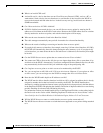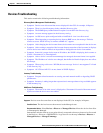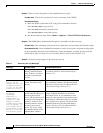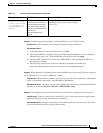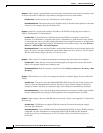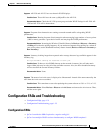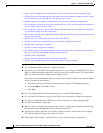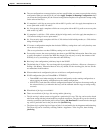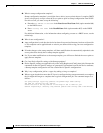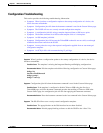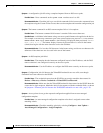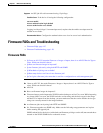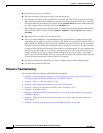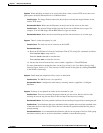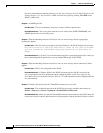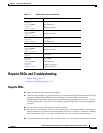
1-24
FAQ and Troubleshooting Guide for the CiscoWorks Wireless LAN Solution Engine
OL-8376-01
Chapter 1 FAQs and Troubleshooting
Configuration FAQs and Troubleshooting
Q.
What is startup configuration template?
Startup configuration template is used right after a device (access point) reboots. It requires DHCP
server to be properly set up to allow the access point to pick its startup configuration from WLSE.
For this to work, you must set up the following:
a. Enter the <IP address of the WLSE> in the Boot Server Host Name field (option number 066)
on the DHCP server.
b. Enter <startup file name> in the BootfileName field (option number 067) on the DHCP
server.
For additional information, or for information about configuring a router as a DHCP server, see the
online help.
Q.
What is auto configuration?
A.
Auto configuration is used after the device has been discovered and inventory has been collected for
it. This template can be applied based on criteria you define while saving your auto-configuration
template.
Q.
If I make changes to the startup template, will those modifications be automatically uploaded to the
access points that already had a startup template applied?
A.
No. If you make modifications to the startup template, you will have to Reload the access point to
apply the new template.
Q.
Can I use Device Specific settings with Startup templates?
A.
Device Specific settings are applicable only with Config Regular and Config Auto jobs. Because the
commands for Device Specific settings are generated at job runtime based on the device attributes,
a Startup template configuration will not contain Device Specific configurations.
Q.
Why is my configuration job for a crypto key taking so long to complete?
A.
When a crypto key that has more than 512 bytes is configured using custom commands or a template,
the job might take longer to complete than a typical configuration job. The command output is as
follows:
ssl-proxy(config)# crypto key generate rsa general-keys label ssh-key
The name for the keys will be: ssh-key
Choose the size of the key modulus in the range of 360 to 2048 for your
General Purpose Keys. Choosing a key modulus greater than 512 may take a few minutes.



